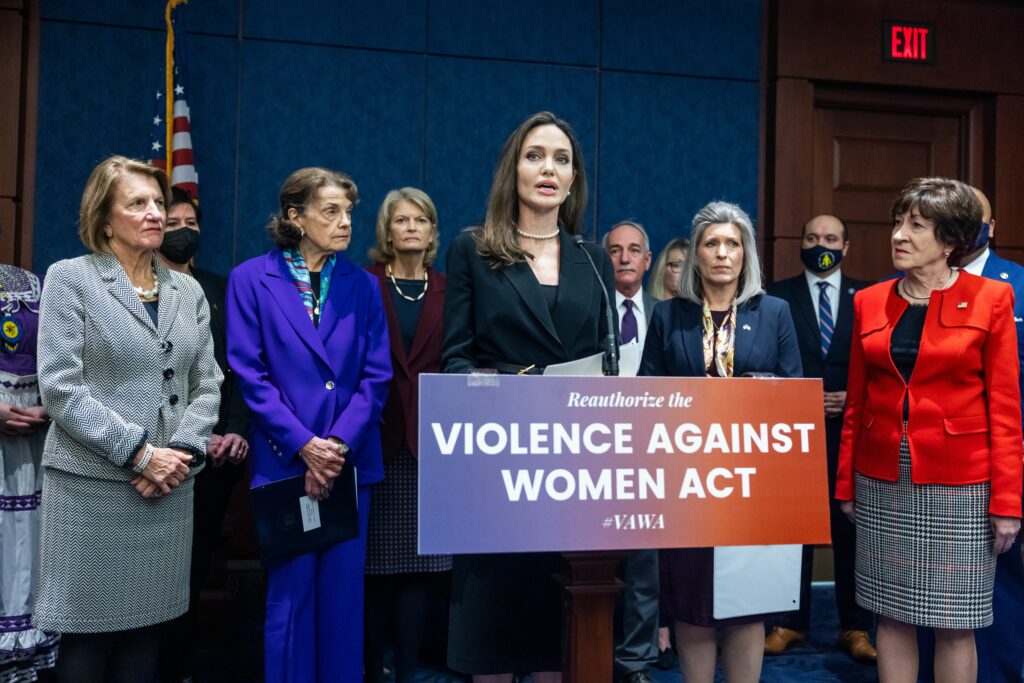10-28-22 | Claire Kao, Communications and Advocacy Coordinator
Domestic Violence Awareness Month: A Renewed Sense of Urgency
Domestic Violence Awareness Month, observed each October, brings a renewed sense of urgency for those of us working to support women and all people affected by relationship abuse.
This is especially true this year, as we emerge from the COVID-19 pandemic.
A new analysis by the Council for Criminal Justice reports that domestic violence increased more than 8% following the pandemic lock-downs of 2020, and the National Domestic Violence Hotline is receiving two to three times as many requests for help as before the pandemic. This “shadow pandemic” meant women were increasingly unsafe at home – and the many impacts of COVID on housing, jobs, transportation and child care meant it was harder than ever to leave.
Even without the economic shocks of COVID, I know there is so much more we can do to support domestic violence survivors. Whether a survivor is female or male, gender non-conforming, or transgender, experiencing domestic violence will have a pervasive impact on a survivor and their family. It will mean they are less likely to find or maintain a job. It can negatively impact someone’s decision or ability to find and maintain housing. And it can impact school, health, safety and one’s ability to be independent.
The good news is that we know some effective strategies to prevent and respond to domestic violence – and these strategies are as important as ever. Futures Without Violence has been at the forefront of many of these strategies, from supporting financial security and workplace responses, to addressing trauma in children, to ensuring healthcare providers are equipped to respond, to engaging men and boys in shifting social norms.
As a policy advocate, my job is to promote legislative and policy solutions that can support survivors and their families. And in this realm, we’ve also made progress.
This year, the landmark Violence Against Women Act was reauthorized after five years of hard fought advocacy. When the bill was first passed in the mid- 1990s it finally put the full force of the federal government into efforts to stop domestic violence, dating violence, stalking and sexual assault and help victims. It provides funds for essential services like shelters, rape crisis centers, and other victim supports.
And the updated Act has an increased focus on more culturally specific resources for Native American communities and LGBTQIA+ people, a bigger focus on teen dating violence, and help for children exposed to violence and culturally-specific communities.
There’s also important unfinished business.
One thing we can all do together before the end of this year is get the Family Violence Prevention & Services Act (FVPSA) Act reauthorized. This important legislation provides critical funding so survivors of domestic violence can access housing, emergency shelter, transportation, childcare and medical and legal counseling, and it is the only federal funding source dedicated solely to domestic violence shelters and services and prevention
Evidence shows that every dollar invested in prevention is a wise investment. The estimated lifetime cost of intimate partner violence is $103,767 per female victim and $23,414 per male victim, or a population economic burden of nearly $3.6 trillion. More importantly, prevention has the potential to transform families and empower people before they experience domestic violence.
There is a lot of work left to address the Shadow Pandemic exacerbated by COVID-19 but importantly we know that prevention and healing are possible. I hope you will join me in helping reauthorize FVPSA and ensure every survivor receives the help and care they need.
Do you want to join us? Sign up for our newsletter and get information on action alerts and other ways you can make a difference.




